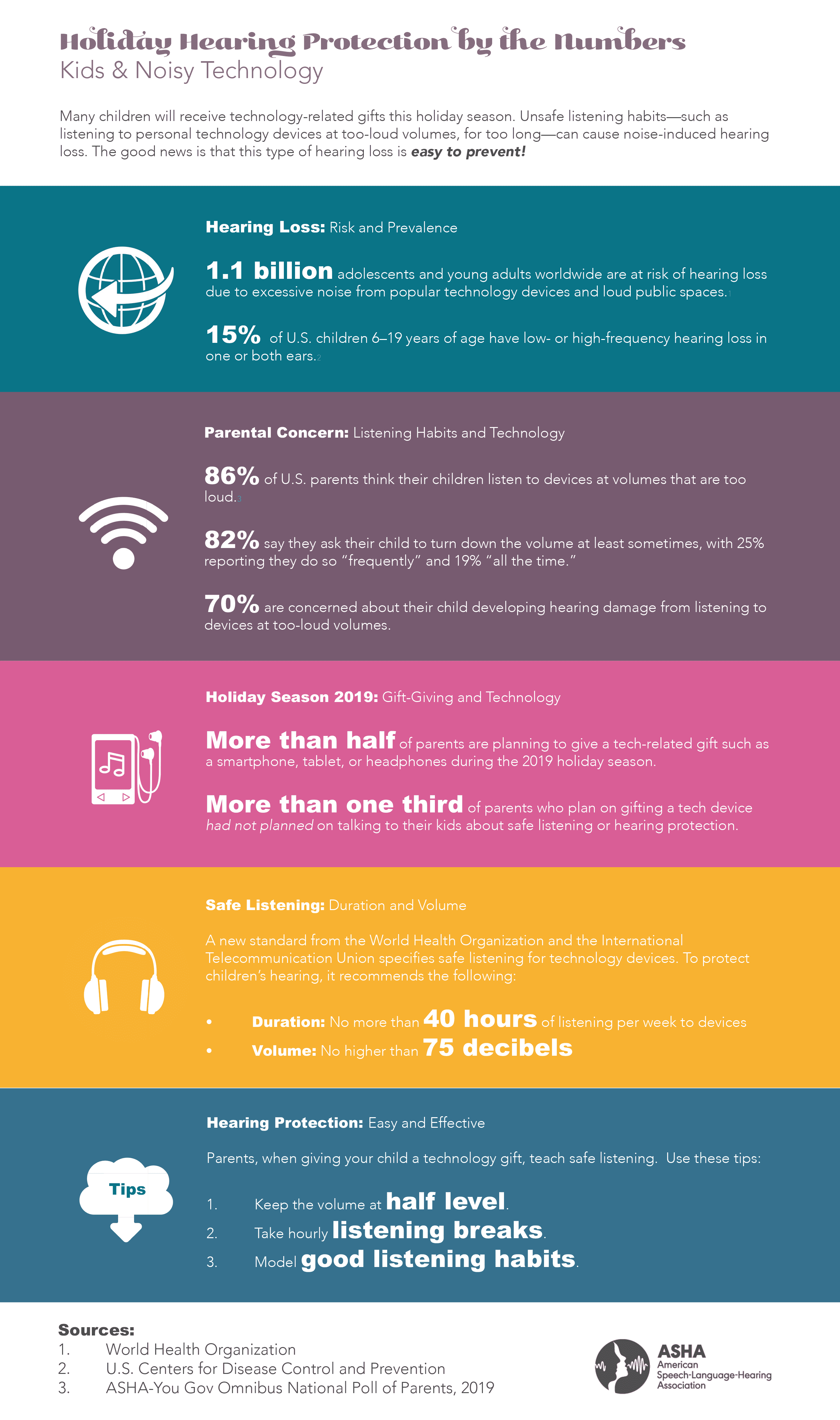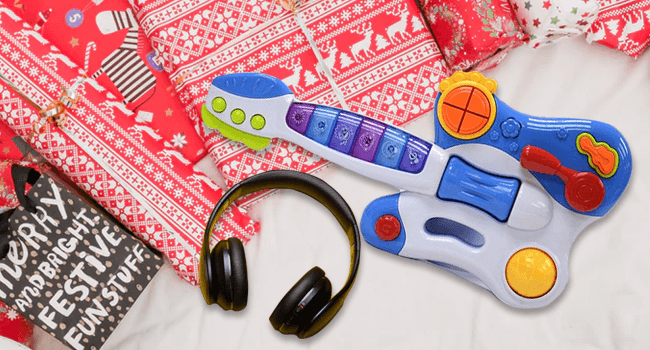Does your child’s holiday gift require hearing protection?
The Sight & Hearing Association recently released their 2019 Annual Noisy Toys List © and the results may shock you. “This year’s list included 19 out of 24 toys that tested louder than 85 dB, the level set by the National Institute of Occupational Health and Safety for mandatory hearing protection.” The Fisher-Price® Laugh & Learn® Smart Learning Home™ was the loudest toy on the list producing a whopping 104.6 dB of noise. That’s louder than a motorcycle or approaching subway train and is loud enough to cause hearing damage within 15 minutes of play time. Click here to see the 2019 Noisy Toys List.
It’s not just young children who are at risk. Tech gifts for teens such as headphones and handheld devices also pose a threat to hearing as well. The World Health Organization reported that 1.1 billion young people worldwide are at risk of hearing loss due to unsafe listening to devices and exposure to noisy leisure environments.
Before gifting noisy toys or headphones, check out these safe listening tips from The American Speech-Language-Hearing Association for ways to help kids and teens protect their hearing and prevent noise-induced hearing loss!
Noisy Toys
Talking (and singing!) dolls, kid instruments, pretend cash registers, phones, and computers . . . the list of toys that make noise is almost endless. Many of these toys can reach noise (decibel) levels that can potentially damage a child’s hearing. This is especially problematic as infants and toddlers often keep toys at or near their ears and face.
Hearing loss due to noise exposure is completely preventable. However, once it occurs, it’s irreversible. Take these simple steps when gifting toys this holiday season:
- Make a List, Cross-Check It (Twice). Know what you want to buy? Cross-check your list with the annual Noisy Toys list from the Sight & Hearing Association. You may be surprised by some of the top offenders—often from major manufacturers.
- Give it a Listen Yourself. Be a savvy shopper. Listen to a toy before you purchase it—and put it back on the shelf if it sounds too loud. This may be harder if you’re making your purchases online, but consider returning toys if the noise level sounds excessive.
- Employ a Quick Fix. If your child has their heart set on a noisy toy, go low-tech with this quick fix—place a piece of masking tape over the toy’s speaker. They’ll still be able to hear but at a much safer volume. By following this advice, parents can help their child protect their hearing—and enjoy a more peaceful home environment themselves.
https://www.asha.org/uploadedFiles/2019-Noisy-Toys-Nuisance.pdf
Headphones and Listening Devices
Are smart devices, state-of-the art headphones, and other tech-related items on your child’s holiday wish list? Help them protect their hearing! More than 1 billion young people worldwide are at risk of developing hearing loss due to unsafe listening practices, according to the World Health Organization.
Be a smart shopper, and check for the following:
- Volume-Control Features. Smart devices and accessories that offer parental controls such as volume limiters can help with safe listening. These aren’t foolproof though, so remember to check in to ensure that they’re working as promised.
- Noise-Cancelling Capabilities. Earbuds or headphones with noise-cancelling features can lessen the need to turn up the volume, since outside noise is reduced or eliminated.
- Kid-Size Fit. A snug fit is important, as loose-fitting earbuds or headphones can cause sound leakage—and may be yet another reason for kids to crank the volume.
https://www.asha.org/uploadedFiles/2019-Safe-listening-Shopping-Tips.pdf
Set guidelines for safe listening:
- Turn the Volume Down. Some headphones marketed for children claim to have maximum noise output levels that won’t damage hearing. But studies have shown that these claims aren’t always reliable. Teach kids to keep the volume at half level.
- Take Listening Breaks. Encourage kids to take listening breaks every hour, even if for just a few minutes. This can make a big difference to their hearing health.
- Model Safe Listening. Practice what you preach. Be mindful of your own volume and listening duration.
https://www.multivu.com/players/English/8460154-asha-safe-listening-tips-holiday-poll/


Advanced Specialty Care offers complete Audiology care for infants through adults. From hearing evaluation, preservation and protection to evaluation and treatment of hearing and balance disorders, we focus on your total hearing health, not just your ability to hear. Call (203) 830-4700 or click here to schedule your audiology or hearing aid appointment in one of our 5 convenient offices throughout Connecticut in Danbury, New Milford, Norwalk, Ridgefield and Southbury.

